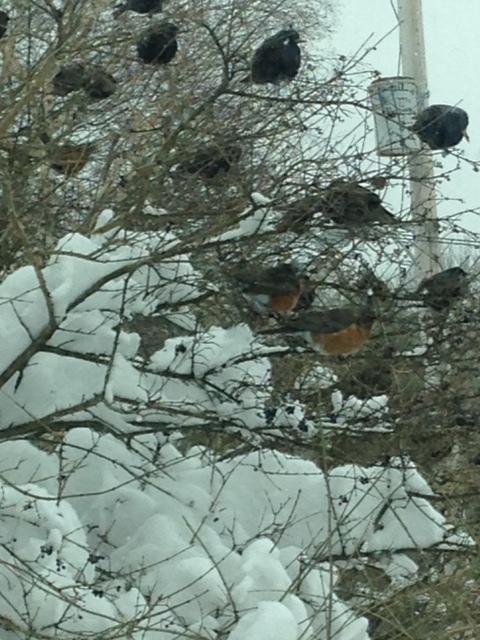If you are fortunate enough to have a flock of robins visiting your neighborhood, take a closer look and you may notice other species of birds mixed with the flock, most notably European Starlings. The starling’s winter plumage is shiny black, bespeckled with white dots and some iridescence to their feathers. During breeding season they gain an even greater degree of iridescence.
Native to Europe, the starling was introduced to the United States in the 1890s. They often join flocks with American Robins. Starlings eat many of the same fruits and berries (crabapples, sumac, holly, and winterberries) as do robins and they are very competitive. Starlings also compete with birds such as Eastern Bluebirds for nesting sites. In a recent mixed flock of robins and starlings I also noticed one gorgeous waxwing!
Several years back we posted this short video. I wish I still had the footage because I am a much better editor today however, at approximately 30 seconds, the starlings make their entrance.
Anne Malvaux inspired today’s post. This morning she very sweetly sent along photos of the flock of robins and starlings that were in her neighborhood on Rocky Neck. She writes,
“Hi Kim, thinking about you because I have at least 50 robin red breasts in my tree in front of my window. I hope all is well. – Anne Malvaux”
Thank you Anne!!!
Original post from 2012: Round Robin Redbreast Snowy Day

